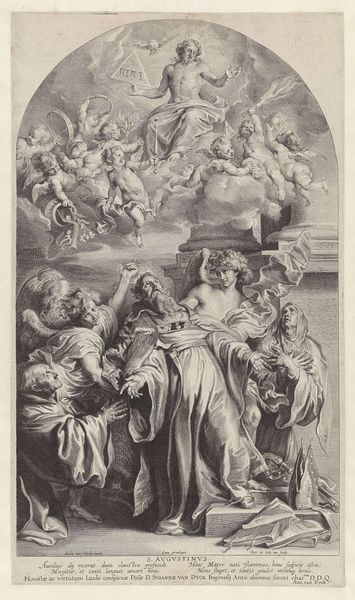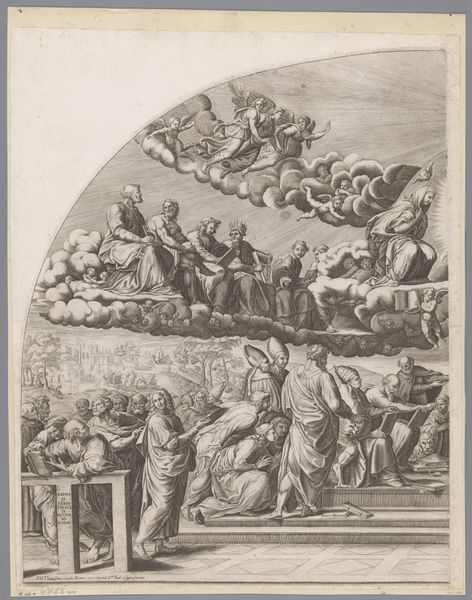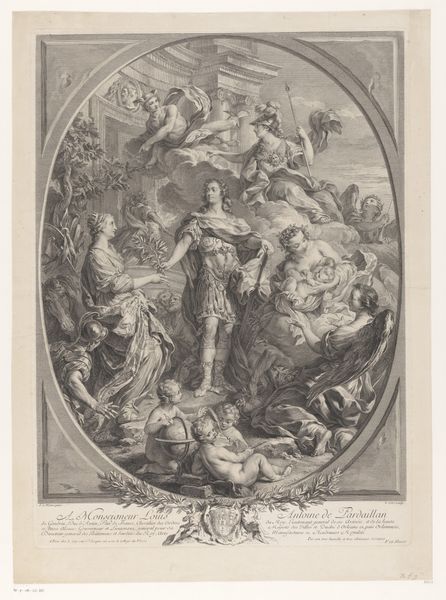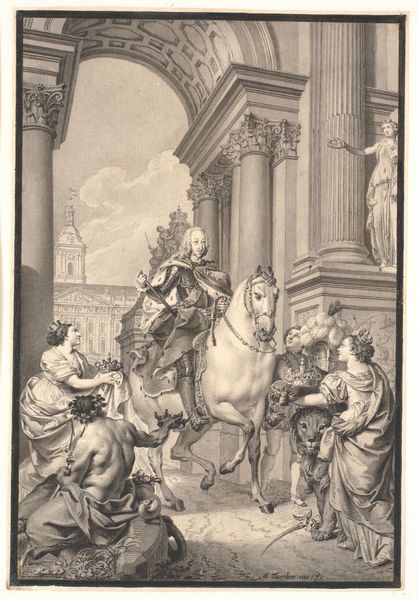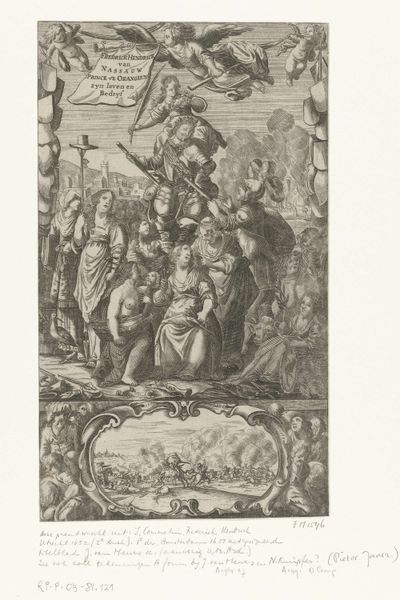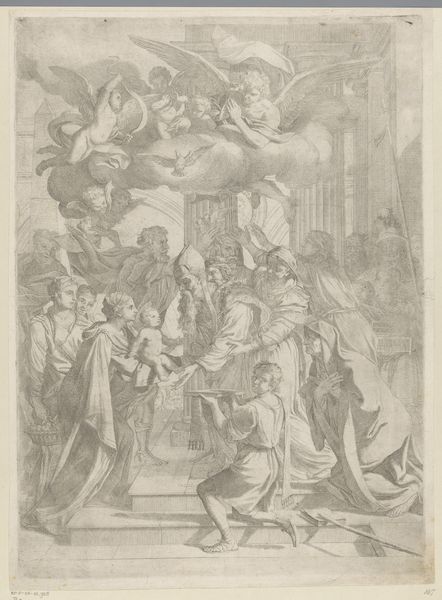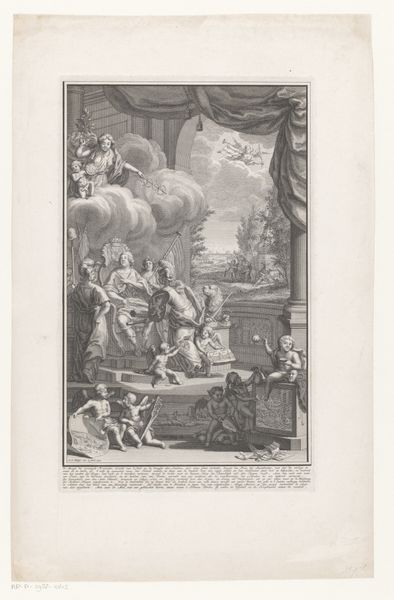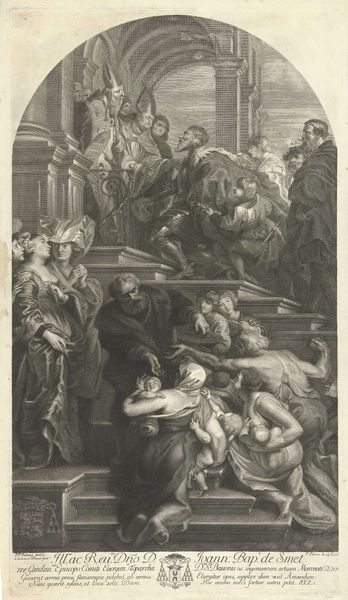
print, engraving
#
allegory
#
narrative-art
#
baroque
# print
#
figuration
#
history-painting
#
engraving
Dimensions: height 658 mm, width 467 mm
Copyright: Rijks Museum: Open Domain
This is Marinus Robyn van der Goes’s print, made in the Netherlands in the 1630s, depicting ‘The Martyrdom of St. Apollonia.’ It shows the gruesome torture of a 3rd-century Christian saint, whose teeth were violently extracted before she was burned at the stake. What can this image tell us about the cultural and institutional history of the Dutch Republic? The work was made during the Counter-Reformation. In the 17th century, the printmaking industry played a pivotal role in disseminating religious and political ideas. These images of martyrdom, circulating widely, could serve to reinforce Catholic doctrine and inspire piety and resistance in the face of Protestant dominance. Yet, the work also speaks to a fascination with violence, and the theatrical display of suffering bodies for a wider audience. The details – the instruments of torture, the expressions of the tormentors – invite a kind of morbid contemplation. To understand this print better, we might research the printmaking industry of the time, and consider the role of religious imagery in shaping social identities. This reminds us that artworks are embedded in complex historical circumstances.
Comments
No comments
Be the first to comment and join the conversation on the ultimate creative platform.

